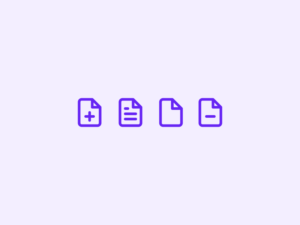UX copywriters have to make a decision of choosing the right words for different scenarios. One such case is whether to choose ‘exit’, ‘quit’, or ‘close’. The right phrase to use while building a Windows program is ‘Exit.’ The ‘Standard Menu Bars’ section of Microsoft’s Design for the Windows desktop book explains this.
The right phrase to use while building a Mac application is “Quit.” (The title of your menu item must be “Quit AppName.”) This is spelt explicitly in the “The App Menu” part of Apple’s Human Interface Guidelines.
Generally, while building applications, you must adhere to the platform’s user-interface requirements to ensure that your app is consistent with other applications on the same platform; you should simplify your app as well as reduce the learning curve for your consumers.
Differentiating between the terms
First and foremost, it should be noted that the terms ‘exit’, ‘quit’, and ‘close’ are not synonymous as they all have different definitions. When used correctly, all of these words are legitimate. To aid in the correct use of the words, it is recommended to understand the terminology’s meanings.
- Run is a phrase used almost exclusively by programmers. Technical newbies will be perplexed as to why you ‘run’ programs.
- Exit – Some people may believe that you may return to something after you exit it.
- Close – As with the previous option, you can reopen something you’ve closed.
There may be some ambiguity here as well when it comes to closing windows. It’s worth noting that depending on the operating system; you can have one of two sorts of behavior: the application is actually shut off, or it simply fades into the background.
Consequently, it is recommended that these phrases be used to describe this sort of behavior:
- Open – In most cases, the phrase is not ambiguous.
- Quit – Indicates to the user that the program has entirely terminated (rather than operating it in the background).
Two terms may be required depending on your application.
If you take the example of Chrome, you can ‘close’ the entire window you can also ‘close’ only an individual tab. Similarly, Photoshop and a slew of other UIs operate the same way. It’s perplexing to have the same phrase for two different things. As a result, there may be a good reason to employ two words such as ‘close’ and ‘exit.’ (e.g.: ‘Close tab’ and ‘Exit chrome’)
Conclusively, it’s highly advised to keep unique acts distinct, so they are not confused with one another.
So, what term should be used?
In terms of an application, “Quit” sounds the most accurate and the user is the most likely to comprehend it. It sounds more definitive as if you don’t intend to revisit the app during this session.
The word “close” implies that a window, tab, or other UI elements as being hidden or removed. Though when you’re referring to a mobile app, “close” implies that you may reopen it without having to reload it as if it’s still operating in the background.




